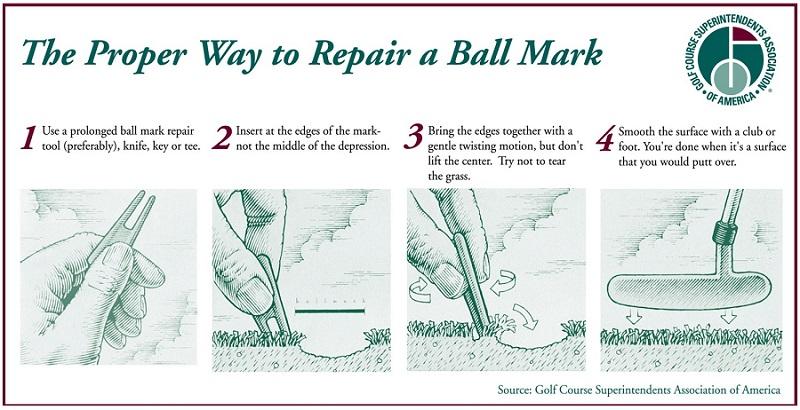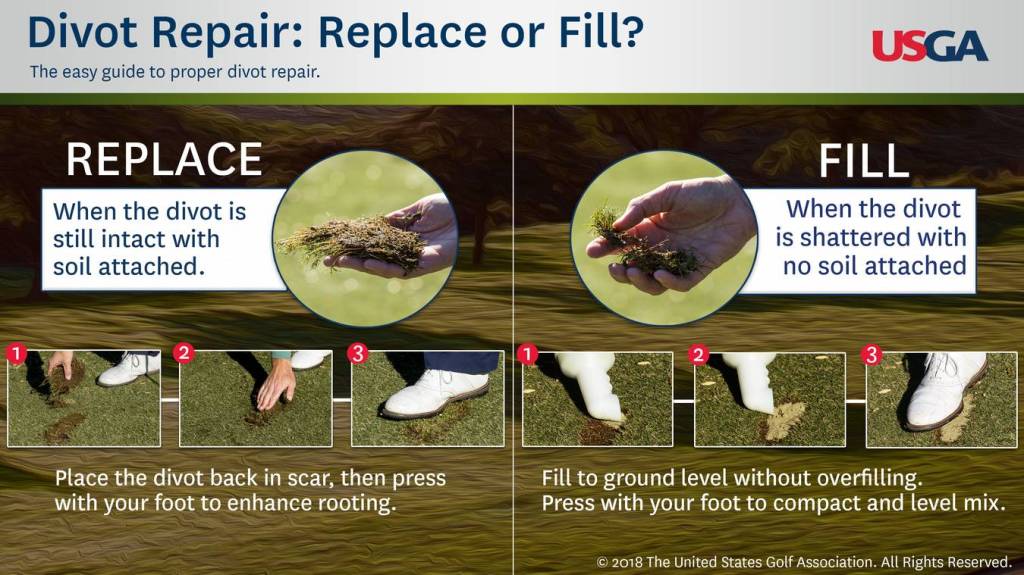We urge you to peruse and adhere to these invaluable course care guidelines. Together, we can enhance the overall beauty and enjoyment of the golf course, while sharing knowledge on the appropriate methods to achieve this shared objective.
Bunker Raking
Bunkers add complexity to the game, often resulting in penalties when your ball lands in one. Dealing with bunkers is challenging, especially if they’re marred by footprints or poorly raked patterns. Just like repairing divots and fixing ball marks, proper bunker maintenance is crucial for preserving the course.
The primary goal when raking a bunker is to ensure a smooth surface for the next golfer. While I find it effective to push the rake away from my body and work outward, your preferred technique may vary. What matters most is leaving behind smooth sand, free from jagged marks or footprints. Before exiting the bunker, remember to tap any sand off your shoes and place the rake parallel to the bunker’s edge.
With a blend of finesse and common sense, you can leave the bunker in a playable and visually pleasing condition. Refer to the attached images for examples of appropriate and inappropriate bunker maintenance practices.

Driving Range Divots
The driving range tee serves as a popular practice spot for golfers, where each swing of an iron typically removes a divot. Even a brief warm-up with 25-30 balls can cause considerable damage to the tee, depending on the divot pattern. Golfers significantly impact the turf coverage and performance of practice range tees. The manner in which one practices not only affects the amount of turf removed per swing but also influences the speed of turf recovery. The three most common divot patterns are: scattered, linear, and concentrated.
A scattered divot pattern is recommended for golfers who do not produce large, deep divots akin to those of professional golfers. Although spatially inefficient, this pattern allows for quicker filling because the surrounding turf remains undisturbed, facilitating easier recovery over time.
The linear divot pattern involves placing each shot directly behind the previous divot, creating a linear sequence with minimal turf removal per swing. Typically, 15 to 20 shots can be taken before shifting sideways to start a new line of divots. By maintaining sections of undisturbed turf between divot strips, the turf can recover rapidly. This pattern is spatially efficient and promotes swift recovery, making it ideal for golfers engaged in prolonged practice sessions.
In contrast, a concentrated divot pattern removes all turf within a specific area. While this method maximizes space utilization, it creates a significant void in the turf canopy, impeding timely recovery. Therefore, we strongly discourage this divot pattern.

Ball Marks
Devoting a small amount of time and care can significantly enhance the overall quality and appearance of the putting surface. Unrepaired ball marks not only take weeks, or even months, to heal but also create openings for weeds to invade the green. Additionally, neglected ball marks can affect green speed and cause putts to deflect off course.
Repairing a ball mark is a quick and straightforward process, achievable with almost any pointed object. While a specialized repair tool is ideal, a standard golf tee serves just as effectively. Simply insert your chosen tool behind the ball mark and gently lift the top towards the center. Continue this method around the mark, coaxing the surrounding turf towards the indentation’s center. After completing this process, gently pat down the area with your putter to create a smooth, compact surface.
It’s worth noting that although both the USGA and GCSAA emphasize the importance of gently lifting the turf to avoid damaging the roots, their technique descriptions may vary slightly. However, the underlying approach remains largely similar, as illustrated below by both organizations.
Below is the USGA and GCSAA’s illustration on proper ball mark repair:


Divots
As we know, a well struck ball typically produces a divot. When we say divot, we are talking about two things: the piece of turf that goes flying and the scar left behind. Not only does an untouched divot diminish the play-ability of the golf course, it will also result in some pretty grumpy golfers revisiting the fact that the USGA did not decide to amend the divot rule in the 2019 modernized Rules of Golf.
Knowing we must play the ball as it lies, the incentive to repair every divot we make becomes greater. Having to play a ball out of a divot you created the day prior is probably the ultimate form of ‘golf karma’. Together, let’s make sure that never happens!
You may ask yourself, “I just hit the purest shot of my life, a chuck of turf flew 15 yards forwards, and I’m standing above a void the size of a small animal. What do I do next?” It’s pretty simple, if the ‘chunk of turf’ held together and is larger than a dollar bill, pick it up and replace it. If it fell apart on contact, take your sand bottle and fill the divot. Whether you replace or fill make sure that the final product results in a level playing surface for the golfers that follow.
The next question you may ask yourself is, “We’ve got a maintenance staff to take care of divots, why should I have to participate in this?” While this is a valid question, if you find yourself asking this, we encourage you to spend some time with our team while we are filling divots. For every divot we fill, 5 more are created.


